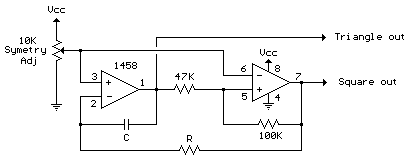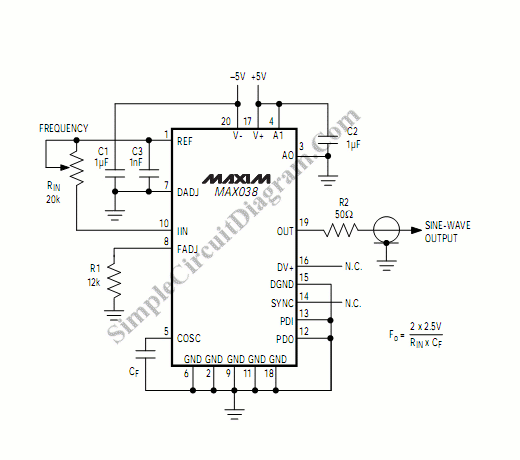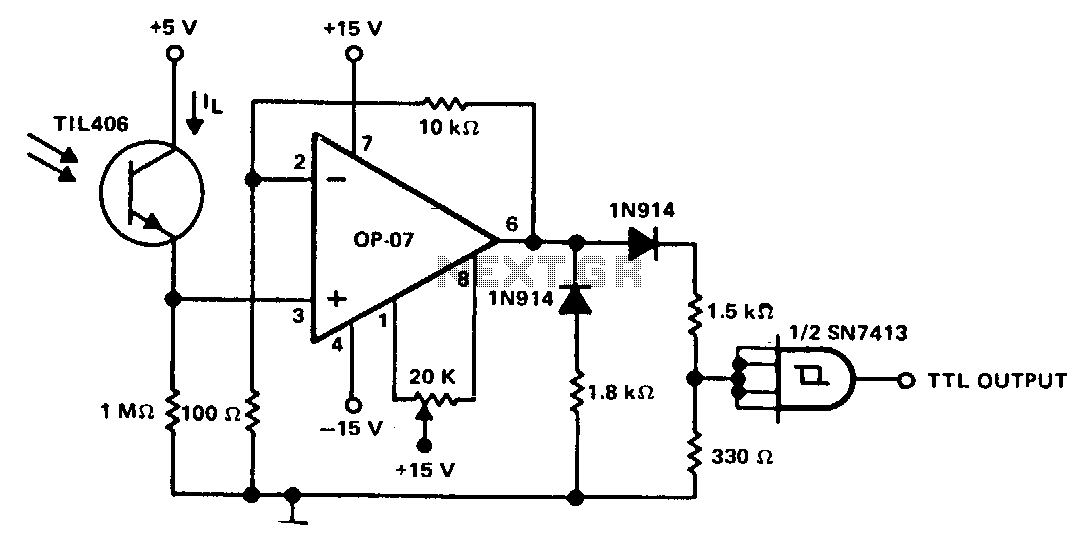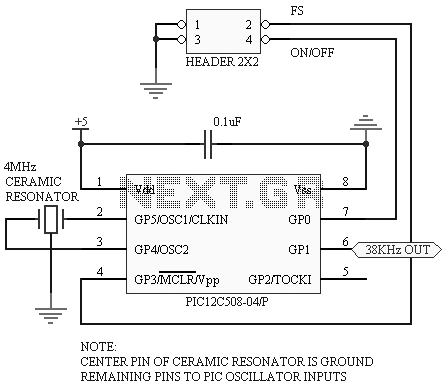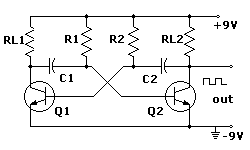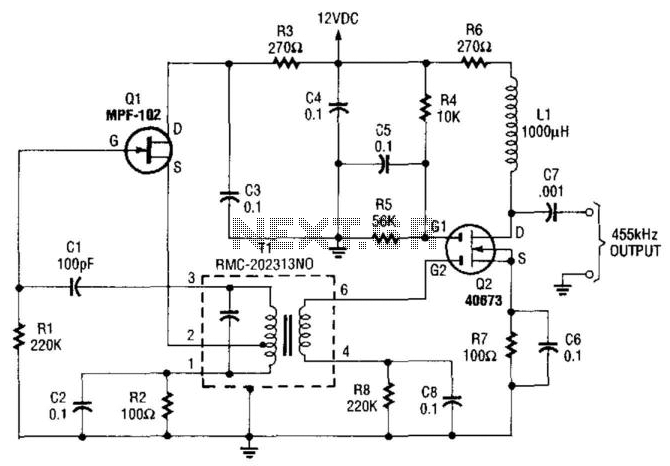
Optical Pulse Generator

This device was initially designed to test the Shutter Time Meter, specifically intended for analog SLR cameras. To accurately measure the exposure time of a camera, it must first be verified with a well-defined signal. This circuit serves that purpose but can also generate a well-defined pulse for other uses. The circuit is built around three standard logic integrated circuits (ICs). The first is a 74HC4060 (IC1), which provides a quartz crystal accurate reference for pulse duration, utilizing a common 4.096 MHz crystal frequency. To test all ranges of the shutter time meter, three different pulse lengths across three decades are selected: 1, 2, 4, 10, 20, 40, 100, 200, and 400 ms. Jumper J1 allows frequency selection of 1000, 500, or 250 Hz. This frequency is passed to J2 and the dual decade counter IC2 (a 4518), which does not need to be a fast HC-type as the maximum frequency is 1 kHz. Jumper J2 can reduce the frequency by factors of 1, 10, or 100. This frequency is then input to IC3 (a 5-stage Johnson counter), configured to output a single pulse. The Johnson counter's advantage lies in its glitch-free outputs that maintain a duration equal to the clock input period. Output Q2 is selected, while Q4 stops the counter and Q0 activates only when the reset button S1 is pressed. To ensure that the reset does not affect pulse duration, a differentiating RC network (R4/C3) generates a short reset pulse, while R3 discharges C4 after S1 is released. The third output is used instead of the second for added reliability, and the fifth output is employed to stop the counter. It is noted that with longer times, the pulse may arrive slightly after the switch is pressed. Resistor R5 drives nearly 20 mA through LED D1, which provides sufficient illumination to trigger the receiver diode in the shutter time meter. A fast LED with a switching time of 40 ns is selected to minimize influence on pulse length. If another LED is used, its switching time must be significantly shorter than the pulse duration. For logic level output applications, D1 can be omitted. Pulse lengths can be adjusted by selecting a different crystal frequency. The circuit consumes less than 2 mA in idle state, with a brief increase to about 18 mA while delivering a pulse. A wire link under IC2 should not be overlooked during assembly.
The circuit is structured to provide a reliable and adjustable pulse output for testing shutter time meters in analog SLR cameras, making it a versatile tool for photographers and electronics enthusiasts alike. The use of a 74HC4060 ensures precision timing, while the dual decade counter allows for flexible frequency division, accommodating various testing scenarios. The Johnson counter's design guarantees clean output pulses, crucial for accurate measurements. The careful selection of components, including the LED and RC network, reflects the attention to detail necessary for achieving optimal performance. This circuit can be further customized by varying the crystal frequency, thus enabling a wide range of pulse durations suitable for different applications. The low idle current consumption ensures efficiency, while the brief surge during operation indicates effective power management. Overall, this circuit exemplifies a practical approach to generating well-defined timing signals for shutter time testing and other electronic applications.This little aid was originally designed to test the Shutter Time Meter. This meter was specifically designed for analogue` SLR cameras. In order to measure the exposure time of a camera accurately, it will first have to be checked with a well-defined signal first. This circuit was designed for that purpose. But the circuit can also be used if you need a well-defined pulse for some other purpose. The circuit is build around a trio of standard logic ICs. Firstly a 74HC4060 (IC1) is used to provide a quartz crystal accurate reference for the duration of the pulses. For the crystal frequency we choose the common 4. 096 MHz value. To test all the ranges of the shutter time meter, we choose three different pulse lengths in three different decades, namely: 1 / 2 / 4 / 10 / 20 / 40 / 100 / 200 / 400 ms.
With jumper J1 you select a frequency of 1000, 500 or 250 Hz (see table). The frequency is then passed on to J2 and the dual decade counter IC2 (a 4518). This does not need to be a fast HC-type, since the frequency is at most 1 kHz. With J2 the frequency can be reduced by 1, 10 or 100 times. This frequency is then applied to IC3 (a 5-stage Johnson-counter). This has been set up in such a way that in the end there appears only one single pulse at the output. The advantage of the Johnson-counter is that each output is free from glitches and has a duration that is exactly equal to the period of the clock input.
We choose Q2 as the output. Q4 is used to stop the counter. Q0 is only active if we push the reset-button S1. IC3 will then start to count. To ensure that the reset does not affect the duration of the pulse, a differentiating RC-network R4/C3 generates a short reset pulse. R3 ensures that C4 is discharged after releasing S1. Also, just to be sure, we don`t use the second counter output but use the third one instead. For the same reason, to stop the counter we use the fifth output. Especially with longer times you will notice that the pulse will arrive at the output a short time after pressing the switch.
R5 drives a current of nearly 20 mA through D1. D1 provides sufficient light for this application to trigger the receiver diode in the shutter time meter. An unusually fast type was selected for the LED, which, with a switching time of 40 ns, has practically no influence on the length of the pulse.
If you would like to use another LED then you will have to look closely at the switching time. This needs to be small compared to the duration of the pulse. If you want to use the circuit with a logic level output then you can just omit D1. If necessary, the pulse lengths can be changed be selecting another crystal frequency. The current consumption in the idle state is less than 2 mA. In our prototype, while the circuit is delivering a pulse, the current consumption increases briefly to about 18 mA. Do not forget the wire link under IC2 when assembling the circuit. 🔗 External reference
The circuit is structured to provide a reliable and adjustable pulse output for testing shutter time meters in analog SLR cameras, making it a versatile tool for photographers and electronics enthusiasts alike. The use of a 74HC4060 ensures precision timing, while the dual decade counter allows for flexible frequency division, accommodating various testing scenarios. The Johnson counter's design guarantees clean output pulses, crucial for accurate measurements. The careful selection of components, including the LED and RC network, reflects the attention to detail necessary for achieving optimal performance. This circuit can be further customized by varying the crystal frequency, thus enabling a wide range of pulse durations suitable for different applications. The low idle current consumption ensures efficiency, while the brief surge during operation indicates effective power management. Overall, this circuit exemplifies a practical approach to generating well-defined timing signals for shutter time testing and other electronic applications.This little aid was originally designed to test the Shutter Time Meter. This meter was specifically designed for analogue` SLR cameras. In order to measure the exposure time of a camera accurately, it will first have to be checked with a well-defined signal first. This circuit was designed for that purpose. But the circuit can also be used if you need a well-defined pulse for some other purpose. The circuit is build around a trio of standard logic ICs. Firstly a 74HC4060 (IC1) is used to provide a quartz crystal accurate reference for the duration of the pulses. For the crystal frequency we choose the common 4. 096 MHz value. To test all the ranges of the shutter time meter, we choose three different pulse lengths in three different decades, namely: 1 / 2 / 4 / 10 / 20 / 40 / 100 / 200 / 400 ms.
With jumper J1 you select a frequency of 1000, 500 or 250 Hz (see table). The frequency is then passed on to J2 and the dual decade counter IC2 (a 4518). This does not need to be a fast HC-type, since the frequency is at most 1 kHz. With J2 the frequency can be reduced by 1, 10 or 100 times. This frequency is then applied to IC3 (a 5-stage Johnson-counter). This has been set up in such a way that in the end there appears only one single pulse at the output. The advantage of the Johnson-counter is that each output is free from glitches and has a duration that is exactly equal to the period of the clock input.
We choose Q2 as the output. Q4 is used to stop the counter. Q0 is only active if we push the reset-button S1. IC3 will then start to count. To ensure that the reset does not affect the duration of the pulse, a differentiating RC-network R4/C3 generates a short reset pulse. R3 ensures that C4 is discharged after releasing S1. Also, just to be sure, we don`t use the second counter output but use the third one instead. For the same reason, to stop the counter we use the fifth output. Especially with longer times you will notice that the pulse will arrive at the output a short time after pressing the switch.
R5 drives a current of nearly 20 mA through D1. D1 provides sufficient light for this application to trigger the receiver diode in the shutter time meter. An unusually fast type was selected for the LED, which, with a switching time of 40 ns, has practically no influence on the length of the pulse.
If you would like to use another LED then you will have to look closely at the switching time. This needs to be small compared to the duration of the pulse. If you want to use the circuit with a logic level output then you can just omit D1. If necessary, the pulse lengths can be changed be selecting another crystal frequency. The current consumption in the idle state is less than 2 mA. In our prototype, while the circuit is delivering a pulse, the current consumption increases briefly to about 18 mA. Do not forget the wire link under IC2 when assembling the circuit. 🔗 External reference
